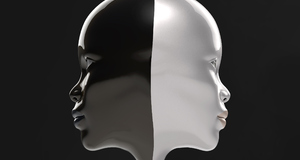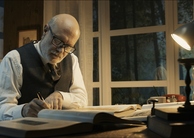From Discussions VOL. 13 NO. 1Theistic Explanations of the Ontology of Consciousness
By
Discussions 2017, Vol. 13 No. 1 | pg. 1/1
IN THIS ARTICLE
KEYWORDS
Consciousness is a thought-provoking phenomenon. In recent decades, though, the philosophy of mind has revealed consciousness to be, in the words of Thomas Nagel, "what makes the mindbody problem intractable" (Nagel, 1979). Though consciousness has made the mind-body problem seemingly intractable, to some philosophers, fi nite and irreducibly subjective conscious experiences call for an explanation (Locke, 1959). It seems to some that a scientific explanation will not and cannot provide an adequate explanation for the existence of consciousness. Although this is controversial, the important natural theological argument for the existence of God from the exis tence of consciousness (AC) needs to be explored. Two important defenders of the AC, Richard Swin burne and Robert Adams, argue it is improbable that a scientific explanation of psycho-physical laws can be given. However, in light of a nuanced formulation of the AC, there has been a lack of dialogue amongst recent objections to traditional AC arguments which merit attention. Thus, a focus will be put on Timothy O'Connor and Kevin Kimble's argument in their article "The Argument from Consciousness Revisited" (2011). They argue that the existence of consciousness contributes to the natural theological argument from fine-tun ing and agree with traditional AC defenders Swin burne and Adams that consciousness raises the probability of theism. It is only in virtue of the AC shifting its functional role to contribute to a design argument that the probability of theism is raised. However, in light of an argument against Kimble and O'Connor's thesis, J.P. Moreland's text Consciousness and The Existence of God (2008) provides the best AC model. "Though consciousness has made the mind-body problem seemingly intractable, to some philosophers, finite and irreducibly subjective conscious experiences call for an explanation." Kimble and O'Connor's objections to Swinburne's argument will be ex plored with a thought experiment. Although Kimble and O'Connor provide an alternative AC, it will be concluded that Moreland's deductive AC is the best current model. In Swinburne's The Exis tence of God (2008), his AC is formulated by first constructing an epistemological framework. He begins by distinguishing types of explanations and types of inductive arguments and distinguishes between personal and scientific explanations. In his view, a personal explanation is an explanation which is brought about by a rational agent acting intentionally (Swinburne, 1979, 32). Alternatively, a scientific explanation is for some phenomenon in the absence of such personal agency. Swinburne differentiates between C-inductive and P-inductive arguments. A C-inductive argument is an argument such that the premises contribute to raising the probability and/or establish the truth of the conclusion. A P-inductive argument maintains that the conclusion is more probable than not, given the premises of the argument (Swin burne, 1979). "Given Swinburne's probability considerations and epistemological framework, the AC ... does not establish conclusively the truth of theism." So, to use a natural theological example, the probability of God's existence from some deductive argument may only serve to raise the probability of the conclusion, not establish it as a conclusion. Thus, the deductive argument in question serves as a C-inductive argument. Giv en this epistemological background, Swinburne construes the AC as to increase the probability of God's existence on a Bayesian Model (Swinburne, 1979, 64). Here, h is the hypothesis, e the evidence and k the general background knowledge: For Swinburne, the probability of God's existence given the natural theological argument from consciousness brings about the conclusion that God's existence is C-inductively more probable than not. He concludes that "A priori, theism is per haps very unlikely, but it is far more likely than any rival supposition" and hence "our phenomena are substantial evidence for the truth of theism" (Swinburne, 1979, 290). Given Swinburne's probability considerations and epistemological framework, the AC raises the probability of theism, but does not establish conclusively the truth of theism. In Swinburne's view, theistic or personal explanation would amount to "God['s] intervention in the natural order bring[ing] about [human persons]" (Swinburne, 1979, 290). On the scientific picture of reality the existence of consciousness is improbable. As a result, agents which are conscious, embodied, and effect-producing through their intentions are much more probable. Given this assumption, Swinburne then makes terminological distinctions between mental and physical events, a precursor for the essential premise of the AC. In Swinburne's later work, he has defined much more thoroughly mental and physical events, alongside further distinctions and classifications. He begins a series of definitions as follows: "a mental event [is] along the same lines as one to which the substance involved has privileged access, and a physical event as one to which the substance involved does not have privileged access, and a pure mental event as a mental event which does not entail a metaphysically contingent physical event as that substance" with the implication that "no mental event is identical to or supervenes on any physical event" (Swinburne, 1979, 161). For instance, "thoughts, feelings, sensations, imaginings, conscious decisions" are all mental events (Swinburne, 1797, 161). Contrarily, brain events are essentially physical events. Given these definitions, Swinburne claims that the argument "needs laws, not merely a collection of generalizations correlating brain events and mental events" (Swinburne, 1979, 169). Applying this to Bayes's probability theorem, Swinburne summarizes his argument: "Let k be the premise of the arguments which we have discussed so far, viz., that there is an orderly (and beautiful world). Let e be the existence of conscious men with brains of the kind which they have. Let h be, as before, the hypothesis of theism—that there is a God. P(e/~h.k) is low" and therefore "the argument from consciousness is a good C-inductive argument for the existence of God" (Swinburne, 1979, 174). Kimble and O'Connor, in their article "The Argument from Consciousness Revisited", are skeptical about traditional AC-type arguments (Kimble, et al., 2011). They direct their critique on the AC formulated by Swinburne and Adams. They "both argue that there can be no–or, more cautiously, that it is very unlikely that there can be a systematic scientific or natural connection between physical properties and experiential qualities that would explain why they are correlated in the patterns that they are" (Kimble, et al., 2011, 134). Thus, for Swinburne and Adams, the natural account of 'psycho-physical laws' is vastly improbable in the absence of a rational, intentional personal agency. Kimble and O'Connor reject this and argue the following: "[Swinburne and Adams'] versions [of the AC] are defective, since they overlook a naturalistic form of explanation that is available even on a robustly dualistic view of conscious states" and therefore the AC "may more plausibly be recast by treating the very form of explanation of conscious states we outline as a further datum in the cur rently popular fine-tuning version of the design argument" (Kimble and O'Connor, 2011, 110). So, the traditional function of the AC was to provide evidence for the hypothesis of theism. However, Kimble and O'Connor challenge this contention and argue that there are problems the traditional AC argument entails which can be overcome through a functional shift of the traditional AC so that it now contributes to the design-argument. They begin their critique with primary consider ations concerning qualia, the phenomenal char acter of experience. They note that Swinburne does not admit to qualia being quantifiable. How ever, Kimble and O'Connor dismiss Swinburne's contention on the grounds that it may well be the case that qualia are quantifiable. To use their ex ample, qualia might display or be in geometrical relations (The Conscious Mind, as cited in Kimble and O'Connor, 2011). However, elsewhere, Swin burne clarifies his statement regarding qualia by means of making a distinction. He admits that there can be measurements of beliefs, but these beliefs can only be measured relative to each other, not absolutely. (Swinburne 2014). Unlike Swin burne, Adams admits that qualia are quantifiable, but notes that there remain two problems for a scientific theory of consciousness. First, that a hypothesized law correlating psycho-physical only describes, and does not explain, why they are correlated as they are. The second is the problem of "finding a mathematical relationship between the qualia of the different modalities" (The Virtue of Faith, as cited in Kimble and O'Connor, 2011, 135). Kimble and O'Connor respond to Adams' claim by arguing that Adams is correct in his analysis until he precludes any form of explanation at all. Instead, they suggest that the "form of explanation that non-panpsychist qualia realism precludes is a reductive and maximally unified explanation" and, further, "admitting primitive phenomenal qualities that causally interact with certain kinds of structured physical states is also to give up the aspiration for maximal theoretical unification" (Kimble and O'Connor, 2011, 135-136). Here, Kimble and O'Connor argue that the implications of such a view is that the aforementioned properties are emergent "robustly" (in an ontological sense). These emergent properties, then, entail "correspondingly irreducible laws that chart their patterns of instantiation and their contribution to the dynamical evolution of physical systems" (Kimble and O'Connor, 2011, 136). It might be tempting here to think that Adams's first argument still holds. Suppose that Kimble and O'Connor's argument is true and that the laws describing the patterns of instantiations can be measured mathematically. "Why do the fundamental particles in the actual world exhibit the causal disposition to give rise to phenomenal states?" It seems that this does not extend to be an explanation; rather, it merely describes the phenomenon itself. It seems that Kimble and O'Connor anticipate such an objection, and so go on to explain why they think that there is an explanation of the psycho-physical laws themselves. They then go on to distinguish two kinds of causal dispositions. The first kind involves what they call "locally de terminative" causal dispositions found in smallscale systems. This sort of causal disposition includes, to use their example, the property of "negatively charged particles to repel one another" (Kimble and O'Connor, 2011, 136). Contrarily, they label the other causal disposition as a config uration of some organized system which contributes to bringing about or generating an emergent property. The argument so far, then, brings about an important consequence, namely, that causal disposition can apply to neural states, which are essentially physical. They give the following ex ample: "if we ask why neural state N1 gives rise to an experience of phenomenal blue, rather than phenomenal yellow, there will be a true answer involving a fundamental disposition of the fundamental constituent particles of N1 toward just such an effect in just such a context, a disposition that is essential to them" (Kimble and O'Connor, 2011, 136). So, it is in virtue of the causal disposition of the constituents of a neural configuration N1 that a particular phenomenal state arises. So to ask 'why did one have a phenomenal state of purple?' is in principle reducible to asking 'why did the constituent properties of the neural configu ration N1 have a causal disposition to bring about the phenomenal state of purple?' Thus, Kimble and O'Connor argue that "the phenomenal realist may reasonably suppose the existence of basic, general laws connecting neural-state types and families of phenomenal-state types (corresponding more or less directly to distinct sensory modalities)" (Kimble and O'Connor, 2011, 135-136). As Kimble and O'Connor note, an inevitable question arises: since fundamental physical entities could have properties having causal dispositions far dif ferent from the dispositions they do have, such as phenomenal states, or not at all, why do the fundamental particles in the actual world exhibit the causal disposition to give rise to phenomenal states? Now, their answer here does not address why some phenomenal character correlates to some neural configuration; it seems that it is arbitrary. For instance, it could be the case that some neural configuration N2 has constituents which bring about the phenomenal character of purple. It seems that reality could have been constructed to have a different neural configura tion N3 which brings about the same phenomenal character. Whether or not this is the case, it seems logically possible that it is. In their view, however, it is in virtue of the truth of theism that the causal disposition of a neural configuration to bring about phenomenal states is to be expected. They conclude their paper by suggesting that "the argument from consciousness is best developed as adding to the data of fine-tuning" (Kimble and O'Connor, 2011, 139). The argument presented by Kimble and O'Connor, however, rests on the causal disposition of fundamental physical entities. However, it can be argued that Moreland's deduc tive AC in his Consciousness and the Existence of God (2008) is the best model so far of a successful AC. Kimble and O'Connor's argument, as it rests on the causal dispositions of the constituents of neural configurations to bring about phenomenal states is not successful. A thought experiment shall be presented that renders their argument improbable. First, given that some neural configuration N1 brings about some phenomenal state P1 in virtue of the causal dispositions of the constituent properties, it follows that these phenomenal states hold independently of a subject. Although this objection might not work on a naturalistic framework, theism makes this improbable. Suppose that there is a robot R which is an essentially material being created by some engineer, say, Dylan. There are two important consider ations here. First, suppose that Dylan constitutes R in such a way that R ends up having something strikingly similar to the human brain. In fact, suppose Dylan somehow was able to duplicate the human brain in its entirety. R would, then, have neural states. So, if Kimble and O'Connor are correct in their analysis, it follows that a robot R would have phenomenal states (in virtue of the constituent properties having causal disposi tions to bring about phenomenal states). This, at least in theism, seems improbable, or any sort of material object, simply in virtue of its constituent properties being arranged in a particular way, would exhibit phenomenal states. It seems more likely that it is human persons who experience phenomenal states and that, further, these phenomenal states are possessed by a rational thinker who acts through her/his intentions, not merely a robot who is configured in the right way. The benefits of phenomenal experience seem inapplicable to material beings independent of a subject having phenomenal experiences. Secondly, if there is a higher probability of human persons, and not merely configurations of matter, exemplifying phenomenal states, it follows that it is arbitrary what has phenomenal states. This arbitrariness does not seem to hold well in theism. Swinburne, for instance, suggests that God has good reasons to bring about human persons. Thus, Kimble and O'Connor would have to explain why God would bring about the ability for human persons to have the capacity in principle to bring about neural states which bring about phenomenal states. They would also have to explain why there would be better benefits to having this state of affairs being realized in the actual world rather than alternative state of affairs. The explanation given by traditional AC-type arguments suggests that psycho-physical laws exist in virtue of a per sonal explanation, not of the dispositions of the constituent properties of a configuration of mat ter. A probable counterargument could be that it is a part of human moral responsibility to have the ability to bring about phenomenal states, and, therefore, the capacity to do so is just another way in which the capacity for freedom of the will and our moral responsibility is realized. It seems more likely, instead, that God would bring about human persons exemplifying these properties insofar as they are good for human persons. It seems that the burden of proof lies on Kimble and O'Connor. It is improbable that phenomenal states are ex plainable in terms of the causal dispositions of the neural configurations. Though Swinburne and Adams have provided for mulations of the AC, Moreland, in his Consciousness and the Existence of God (2008), has provided a different formulation which formalizes the AC in important ways and makes considerable progress in the construction of AC-type arguments. Although Moreland's argument is consistent with Swinburne and Adams's argument, Moreland's ar gument has benefits with regard to its deductive construction and the criteria he sets for scientific theory acceptance prior to the construction of the argument. Prior to the deductive argument, Moreland argues that "three issues that inform the adjudication between rival scientific theories are relevant to AC" (Moreland, 2008, 28). He argues that basicality, naturalness, and epistemic values are criteria which hold epistemological weight in scientific theory acceptance. He takes basicali ty to mean essentially a phenomenon which is ontologically basic. "It seems more likely that it is human persons who experience phenomenal states and that, further, these phenonmenal states are possessed by a rational thinker who acts through her/his intentions, not merely a robot who is configured in the right way." For Moreland, "Consciousness is ontologically basic for theism since it characterizes the fundamental being" (Moreland, 2008, 29). With regard to naturalness, Moreland argues that some entity should be "at home" in the theory. That is, the entity in question should not be "out of place" in one's ontology. For instance, if in some possible world all that exists are causally inert abstract objects, such as numbers, sets, and propositions. It is not natural that there should exist a materially existent, concrete book, for ex ample, Plato's Republic, amidst the abstract objects. Lastly, epistemic values roughly amounts to "a normative property, which, if possessed by a theory, confers some degree of rational justifi cation on that theory" (Moreland, 2008, 30). For instance, a theory's possessing the property of simplicity is an epistemic value which does not in and of itself justify a theory's truth, but which attributes a rough degree of rational justification on the theory itself. Since Moreland takes consciousness to be basic, natural, and possessive of epistemic values on theism, this criteria serves as a prelude to his AC. He mentions three forms of the AC as such: inference to the best explanation, Bayesian, and deduction. Since inference to the best explanation has been implicitly and explicitly discussed and Swinburne's Bayesian AC has been explored, Moreland's deductive argument is as follows:
This deductive argument reaches the same conclusion as the traditional AC-type arguments, namely, that the best explanation of mental events or psycho-physical laws is a theistic explanation. However, there are three reasons why this argument is conducive to yield a correct formulation of an AC. First, this deductive argument essentially formalizes the traditional AC-type arguments, that is, the premises are explicitly stated and they incorporate the essential theses and premises of the traditional AC. "It is improbable that phenomenal states are explainable in terms of the causal dispositions of the neural congifurations." Secondly, one cannot dismiss the AC on the basis that it relies on Bayes's theorem. So, such an ad hoc attempt of avoiding the AC does not work given the deductive construal of the argument. Lastly, Moreland's argument allows one to "gain clarity on the precise considerations that most likely provide the basis for an IBE [Inference to the Best Explanation] argument or for assignment of probabilities to key factors in the Bayesian approach." (Moreland, 2008, 37). Thus, Moreland's deductive formulation, whether or not successful, is the best formulation of the AC. Although the argument by Kimble and O'Connor provide an alternative to the traditional AC, Moreland's deductive AC yields the most successful model. AuthorRashad Rehman is a first year student studying in the faculty of Arts and Humanities and his interests lie within philosophy, theology, and philosophical theology. His research consists of surveying, analyzing, and evaluating arguments for God's existence, namely, the argument for the existence of God from the existence of consciousness. He consults contemporary work by analytic philosophers of religion (who also do work in natural theology) and also work being done in the field of philosophy of mind. His research contributes to establishing another argument for God's existence to the plethora of other contemporary natural theological arguments available. AcknowledgementsI would like to thank Professor Pietro Pirani who oversaw the development of this essay, provided insightful comments on the original draft and for his ineliminable suggestions during our discussions. I would also like to thank my wonderful family (Emily and Kim included), as well as Yousuf, for attending my oral presentation at the Western Student Research Conference (2016), a presentation based entirely this paper. ReferencesLocke, John. An Essay Concerning Human Understanding, vol.2. New York: Dover Publications, 1959. Moreland, J.P. Consciousness and the Existence of God. New York: Routledge, 2008. Kimble, Kevin and Timothy O'Connor. "The Argument from Consciousness Revisited." Oxford Studies in Philosophy of Religion 3 (2011): 110-141. Churchland, Paul M. The Engine of Reason, the Seat of the Soul (Cambridge, Massachusetts and London, England: MIT Press, 1996. Plantinga, Alvin. "Two Dozen (or so) Theistic Arguments," Lecture presented at the 33rd Annual Philosophy Conference, Wheaton College, Wheaton, Illinois, October 23-25, 1986. Swinburne, Richard. Mind, Brain and Free Will. Oxford: Oxford University Press, 2013. Swinburne, Richard. "The Argument from Colors and Flavors," Lecture presented at the Plantinga Workshop, Baylor University, Waco, Texas, November 4 th , 2014. Swinburne, Richard. The Existence of God, 2 nd ed. New York: Oxford University Press, 1979. Nagel, Thomas. "What is it like to be a Bat?" in Mortal Questions. Cambridge, UK: Cambridge University Press, 1979. Smith, Quentin and Aleksandar Jokic eds. Consciousness: New Philosophical Perspectives. New York: Oxford University Press, 2003. Moreland, J.P. and William Lane Craig. Philosophical Foundations for a Christian Worldview. Downers Grove, Illinois: Intervarsity Press, 2003. AppendixSuggested Reading from Inquiries Journal
Inquiries Journal provides undergraduate and graduate students around the world a platform for the wide dissemination of academic work over a range of core disciplines. Representing the work of students from hundreds of institutions around the globe, Inquiries Journal's large database of academic articles is completely free. Learn more | Blog | Submit Latest in Philosophy |



















